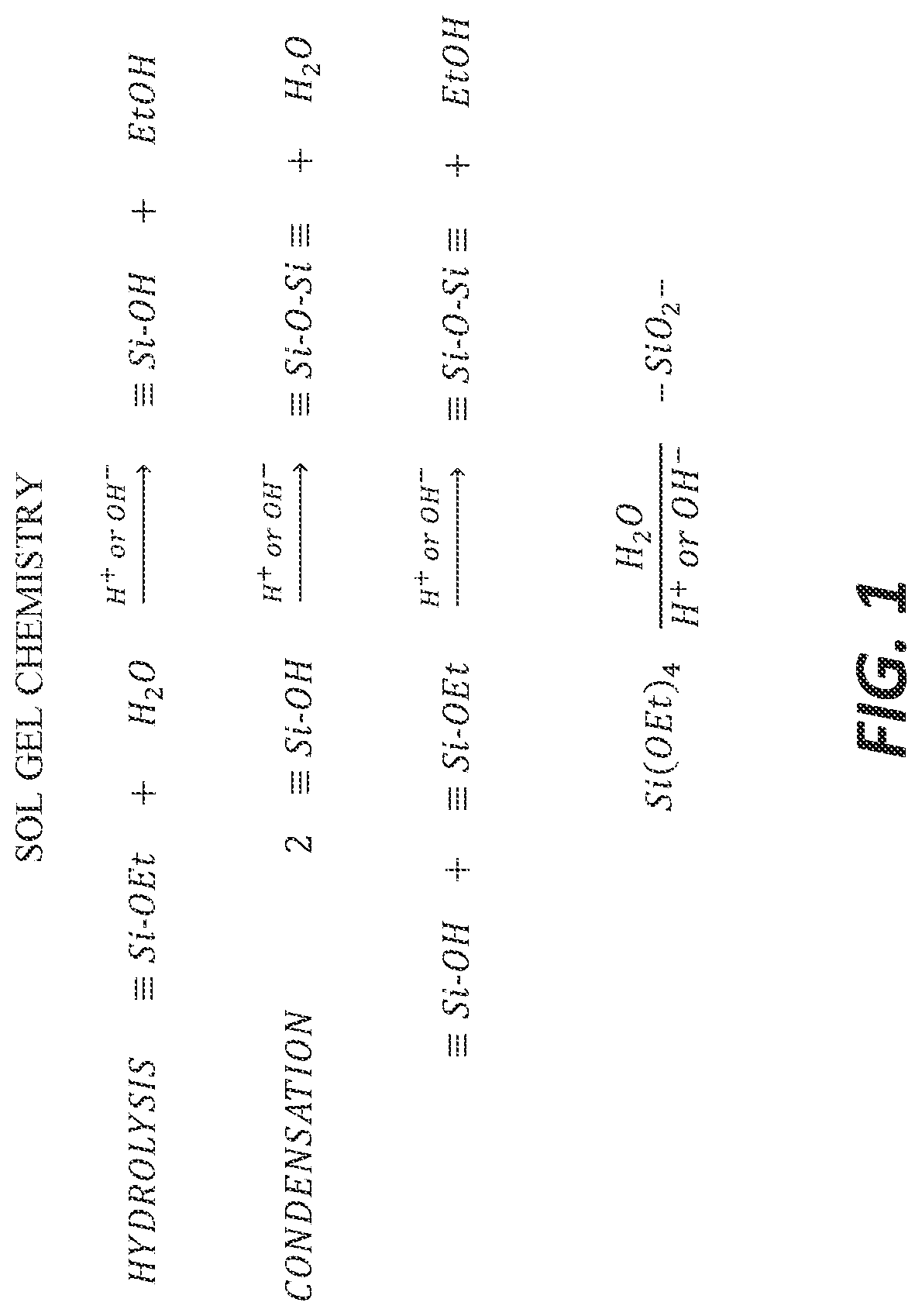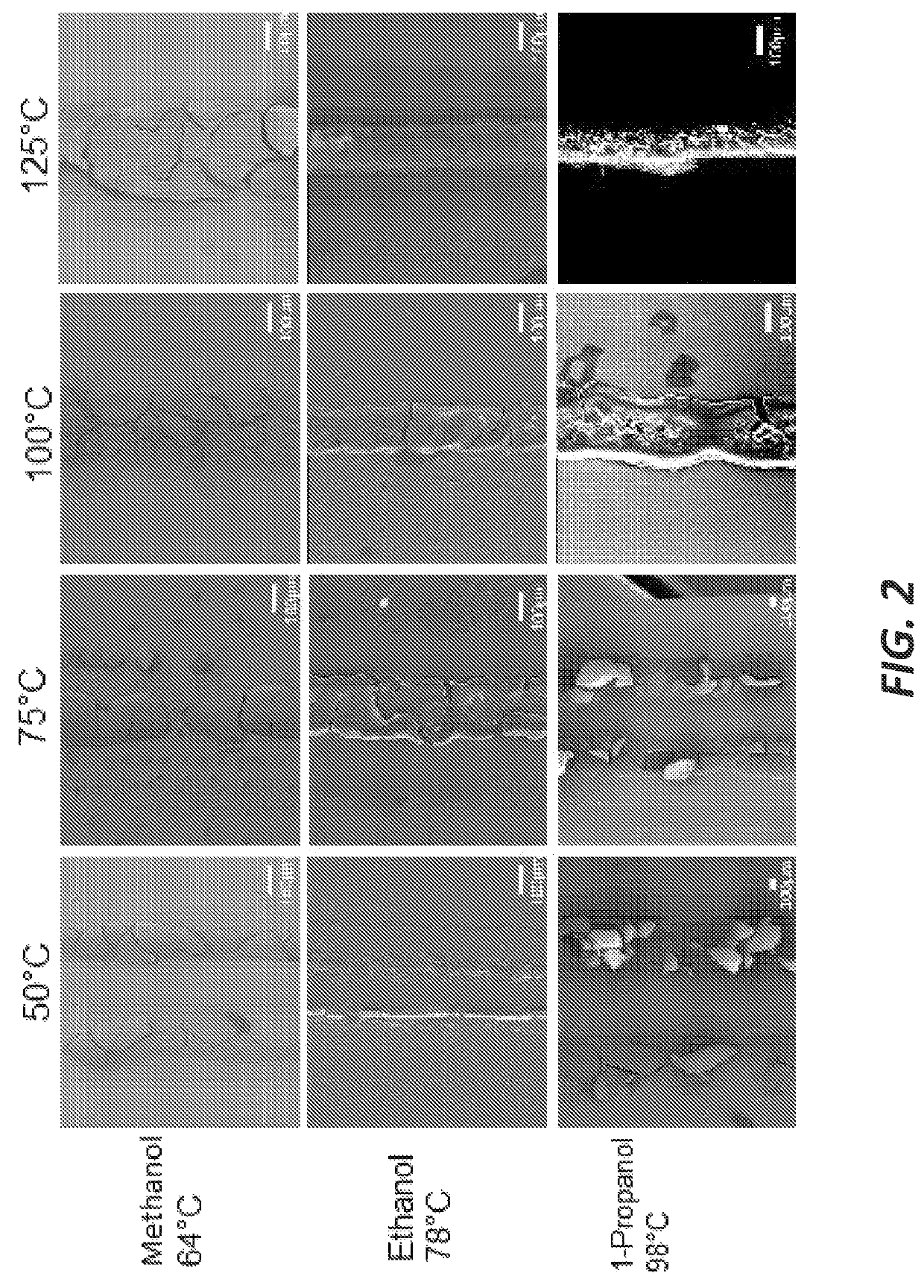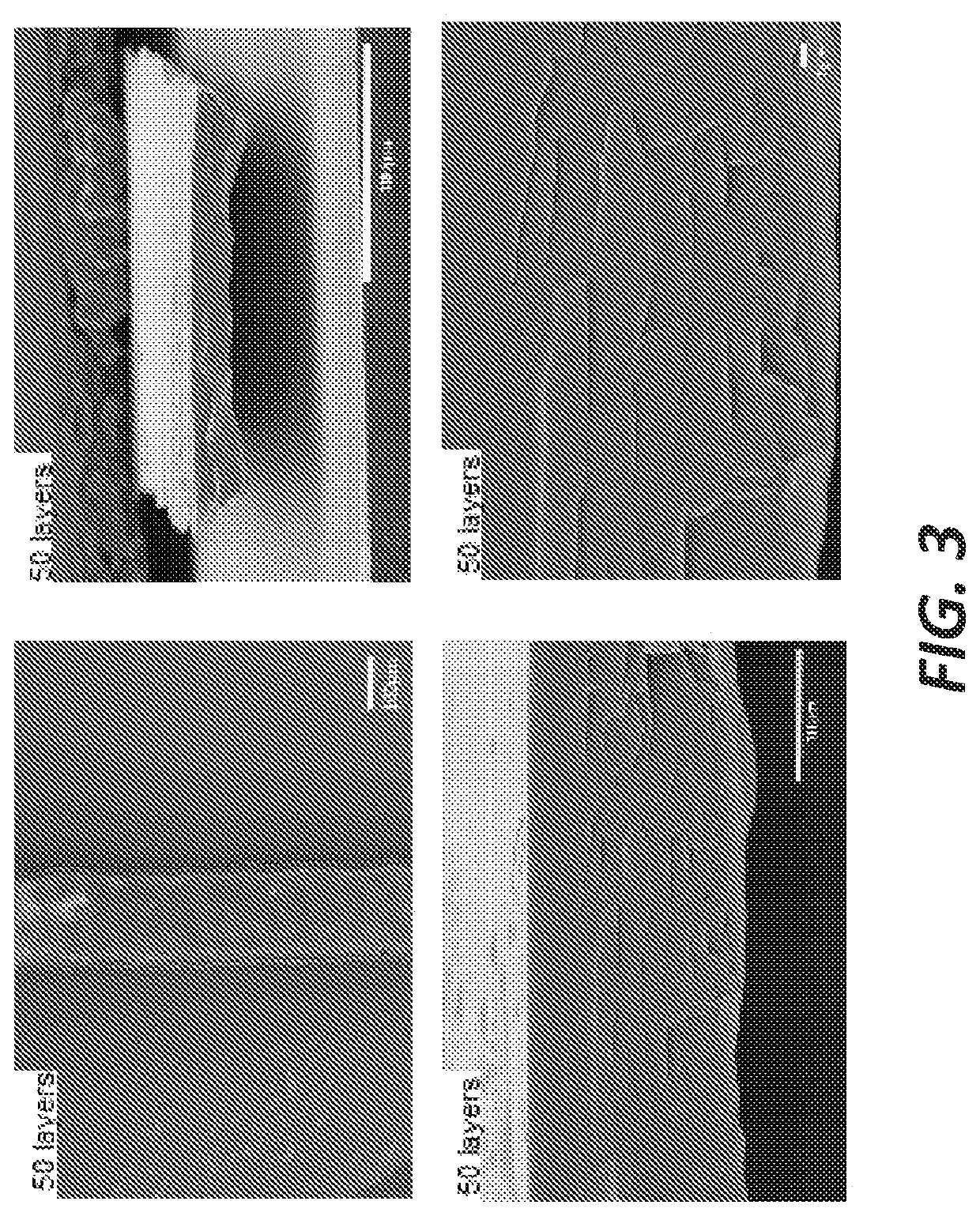Systems and methods for controlling the morphology and porosity of printed reactive inks for high precision printing
a reactive ink and printing technology, applied in the field of systems and methods for controlling the morphology and porosity of printed reactive inks for high precision printing, can solve the problems of complex patterning process, multiple steps of electroless plated contacts, and the inability to achieve high quality of existing techniques, so as to achieve high performance, reduce capital expenditures, and increase the maximum sustainable growth rate and profit margin.
- Summary
- Abstract
- Description
- Claims
- Application Information
AI Technical Summary
Benefits of technology
Problems solved by technology
Method used
Image
Examples
example 1
[0084]As described above, the dispensing RSI printing process of FIGS. 8A, 8B, and 8C is performed using the printing system of FIG. 7. The base ink for RSI was prepared with 1.0 g silver acetate (C2H3AgO2, anhydrous 99%, Alfa Aesar) dissolved in 2.5 mL ammonium hydroxide (NH4OH, 28-30 wt %, ACS grade, BDH Chemicals). The solution was then stirred for 2 minutes on a vortex mixer to dissolve the silver acetate. Next, 0.2 mL of formic acid (CH2O2, >=96%, ACS reagent grade, Sigma Aldrich) was added in two steps with a quick stir at the end of each step. The ink was then allowed to sit for 12 hours before being filtered through a 450 nm nylon filter.
[0085]This base ink was then diluted 1:1 or 10:1 by volume with ethanol (EtOH, C2H6O, ACS reagent grade, Sigma Aldrich) to increase the stability of the droplets for printing contact pads (7×7 mm2) on glass slides for bulk resistivity measurements. The diluted ink was then filtered again through the 450 nm nylon filter immediately before use...
example 2
[0096]The base ink for RSI was prepared with 1.0 g of silver acetate (C2H3AgO2, anhydrous 99%, Alfa Aesar) was dissolved in 2.5 mL ammonium hydroxide (NH4OH, 28-30 wt %, ACS grade, BDH Chemicals). The solution was then stirred for 2 minutes on a vortex mixer to dissolve the silver acetate. Next, 0.2 mL of formic acid (CH2O2, ≥96%, ACS reagent grade, Sigma Aldrich) was added in two steps with a quick stir at the end of each step. The ink was then allowed to sit for 12 hours before being filtered through a 450 nm nylon filter. For this example, the RSI was diluted 1:1 by volume with ethanol (EtOH, C2H6O, ACS reagent grade, Sigma Aldrich) and then filtered again through the 450 nm nylon filter immediately before use.
[0097]RSI metallization features were printed in ambient atmosphere on a Microfab Jetlab II inkjet printing system. The Jetlab II is equipped with an MJATP-01 piezoelectric-driven print head with 60-μm-wide nozzle. Samples were printed with the substrate held between 51° C....
example 3
[0114]Most prior studies on low-temperature reactive inks are investigations with the ink printed at room temperature, allowed to dry, and then sintered at elevated temperatures to improve the material properties. These studies have not explored the unique role that temperature and solvent evaporation play in controlling the in situ reduction rates and morphology of the printed structures. While most work provides top-down images of their printed silver, detailed information regarding the porosity and cross-section morphology is lacking. In this example, it is demonstrated how the porosity of silver structures printed with diaminesilver (I) inks can be controlled from 93% porosity down to 50% porosity by adjusting solvent vapor pressure, solvent viscosity, and substrate temperature. These results take advantage of the increase in reduction reaction rate and solvent evaporate rate that occurs at elevated temperatures when solvents with low surface energy and high vapor pressures are ...
PUM
| Property | Measurement | Unit |
|---|---|---|
| temperature | aaaaa | aaaaa |
| temperature | aaaaa | aaaaa |
| porosity | aaaaa | aaaaa |
Abstract
Description
Claims
Application Information
 Login to View More
Login to View More - R&D
- Intellectual Property
- Life Sciences
- Materials
- Tech Scout
- Unparalleled Data Quality
- Higher Quality Content
- 60% Fewer Hallucinations
Browse by: Latest US Patents, China's latest patents, Technical Efficacy Thesaurus, Application Domain, Technology Topic, Popular Technical Reports.
© 2025 PatSnap. All rights reserved.Legal|Privacy policy|Modern Slavery Act Transparency Statement|Sitemap|About US| Contact US: help@patsnap.com



